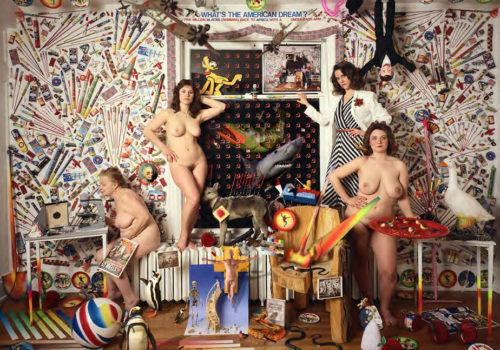[…] In 1978, after ten years of exhibiting and publishing with regularity, my standard print price for an 8”x10” contact print was $350. I didn’t sell many, but I did as well as most of my peers. In my experience, almost all art students in graduate school majoring in photography asked—and occasionally received—anywhere from $50 (considered a low price) to over $150 per print. This was for work which was—at least at that point in their careers—generally derivative or an overt plagiarism (not unusual phenomena among graduate art students). Not represented by a gallery, a graduate student could keep the entire $150 received for a picture. When a picture of mine sold through a gallery for $350, I received 50%, or $175. Effectively, our work sold for about the same amount. In early 1978, I decided that I wanted to begin enlarging 8”x10” negatives. To do this I needed an 8”x10” enlarger, and wanted a nitrogen-burst development system to process negatives. I would also need a darkroom. Not having been a graduate student for many years, I did not have access to an 8”x10” enlarger and would have to buy my own. […]
It was with a selection of 23 pictures from “Academic Art: 1975—1978,” and a new 11-print work (a set) called “PLEASE!” that I went to “Photographic Collecting Past & Present in the United States, Canada, & Europe,” driving from Buffalo to Rochester in my 1976, canary yellow, 911 Porsche, arriving in Rochester on a gloomy October day. The bait was the $50 print, but the hook was what I’d suggested to LIGHT: a minimum purchase of 10 prints—any 10 from the Academic Art group—for $500. The 11-print set of “PLEASE!” was priced at $400 the set, or $36.36 per print (36/36 being two of my mother’s most curvaceous measurements). “PLEASE!” had been made specifically to be sold at the symposium as a charity piece: photographs of my mother literally begging in the dusty industrial areas of Buffalo, wearing a two-piece bikini, carrying a tin cup of pencils, a blind man’s cane, and a card on her forehead with the word PLEASE! These were made to sell to provide money for her old age—a charity benefitting a real person rather than an institution, offered literally in the context of another notion of charity. […]
There have been a number of interesting results from those exciting three days. In the last two years certain galleries have offered to buy $50 (sometimes only $35, or $45) pictures from the artists they represent. LIGHT even offered me a megabuck, three year, $50-a-print contract. I don’t sell $50 prints anymore, and I suspect after the first long-awaited gulp of real money, there won’t be too many others foolish enough to sell work at that price. The most interesting results—for me, anyhow—are this limited-edition folio of new pictures, and the new darkroom built to produce them. The folio’s title, “IDIOSYNCRATIC PICTURES,” personifies the pictures, the method employed to acquire the equipment to make them, and the spirit of other work I’ve done. This is my most ambitious portfolio project to date; and I’m convinced it’s my most beautiful and effective. This folio updates the spirit and tradition of the $50 print: good work, at a reasonable price, from an independent artist.
Les Krims Buffalo, New York July 1980
EXHIBITION
Leslie Krims
Paris Photo 2014
From November 13 to 16, 2014
Paci Contemporary
Stand C41
Grand Palais
Avenue Winston Churchill
75008 Paris
http://www.parisphoto.com
BOOK
Leslie Krims
Photographs and texts by Leslie Krims
Publisher : Paci Contemporary
ISBN 978-88-6414-006-3
20,00€
http://www.pacicontemporary.com
INFORMATIONS
Via Trieste 48
25121 Brescia
ITALY
+39 030 2906352
[email protected]
http://www.pacicontemporary.com
















